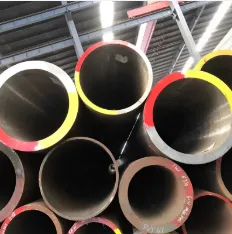

The galvanization process itself underscores the safety and reliability associated with these pipes. Reputable manufacturers adhere to strict quality control measures to ensure that each pipe meets regulations and standards set by industry authorities. This meticulous attention to detail instills confidence among end-users, reinforcing the notion that galvanized pipes are a trustworthy choice. Environmental considerations also play into the galvanization method. The coating involves natural metals, and as such, processes involved in the creation and utilization of galvanized pipes tend to be less environmentally taxing compared to alternatives reliant on synthetic chemicals. When these pipes reach the end of their lifecycle, recycling is a viable option, highlighting the sustainability aspect of galvanized piping products and thus appealing to environmentally conscious markets. It's crucial for consumers to recognize that while galvanized pipes present numerous benefits, they might not always be the optimal choice for all scenarios, specifically in areas where water pH levels are particularly low. In such environments, the zinc coating could potentially contribute to water quality issues. However, contemporary innovations in pipe lining technology continue to address these concerns, allowing professionals to customize solutions accordingly. In conclusion, galvanized pipes remain a mainstay in the piping industry due to their proven durability, reliability in diverse applications, and compliance with industry standards. Their corrosion resistance secures their place in both temporary and permanent installations, defending against environmental and logistical challenges. Furthermore, ongoing advancements in galvanization technology promise to expand the utility and efficiency of these pipes, suggesting a future where they continue to fulfill pivotal roles across various sectors.
Post time: Mar . 04, 2025 07:47

















